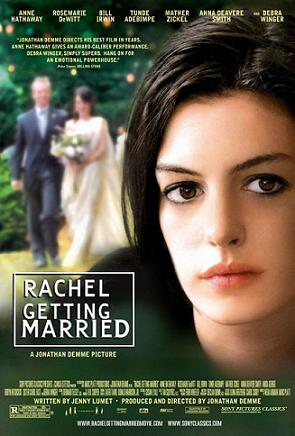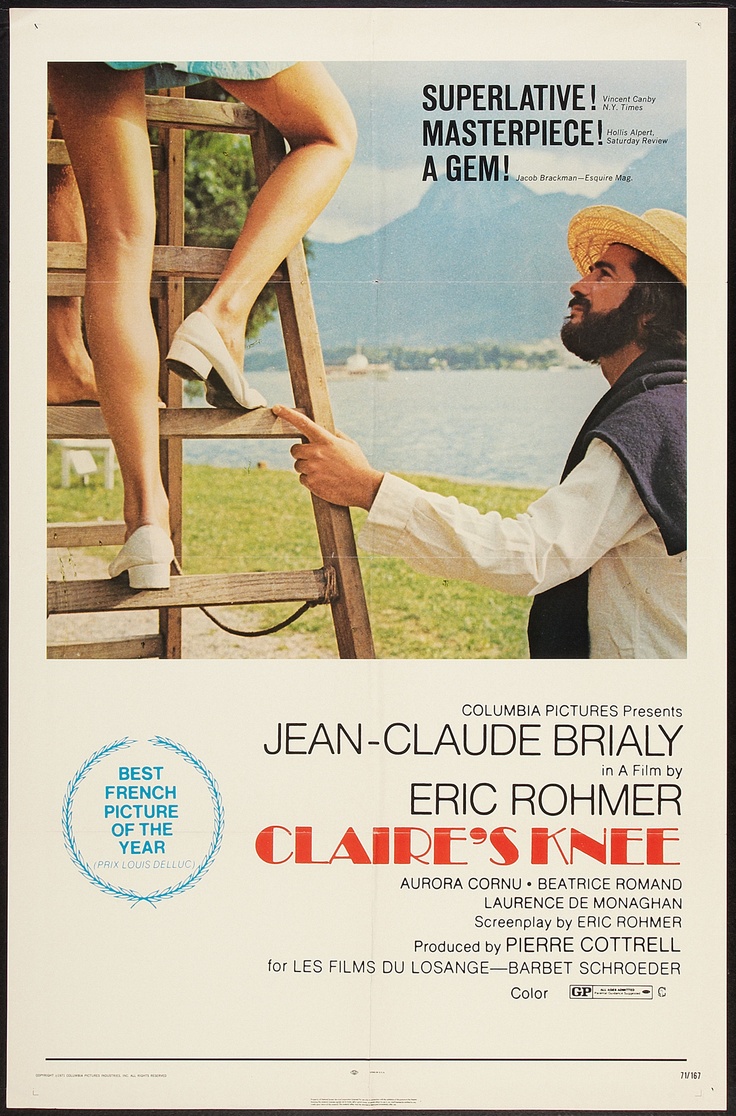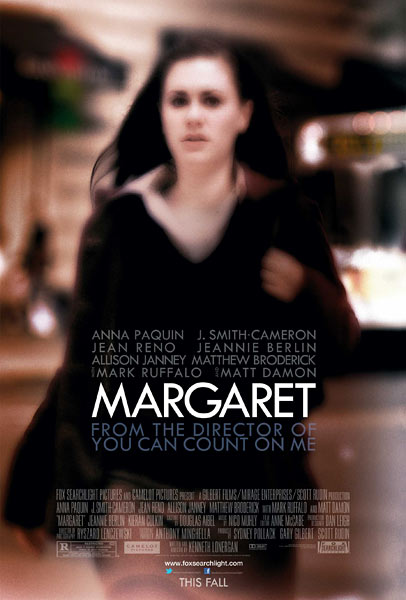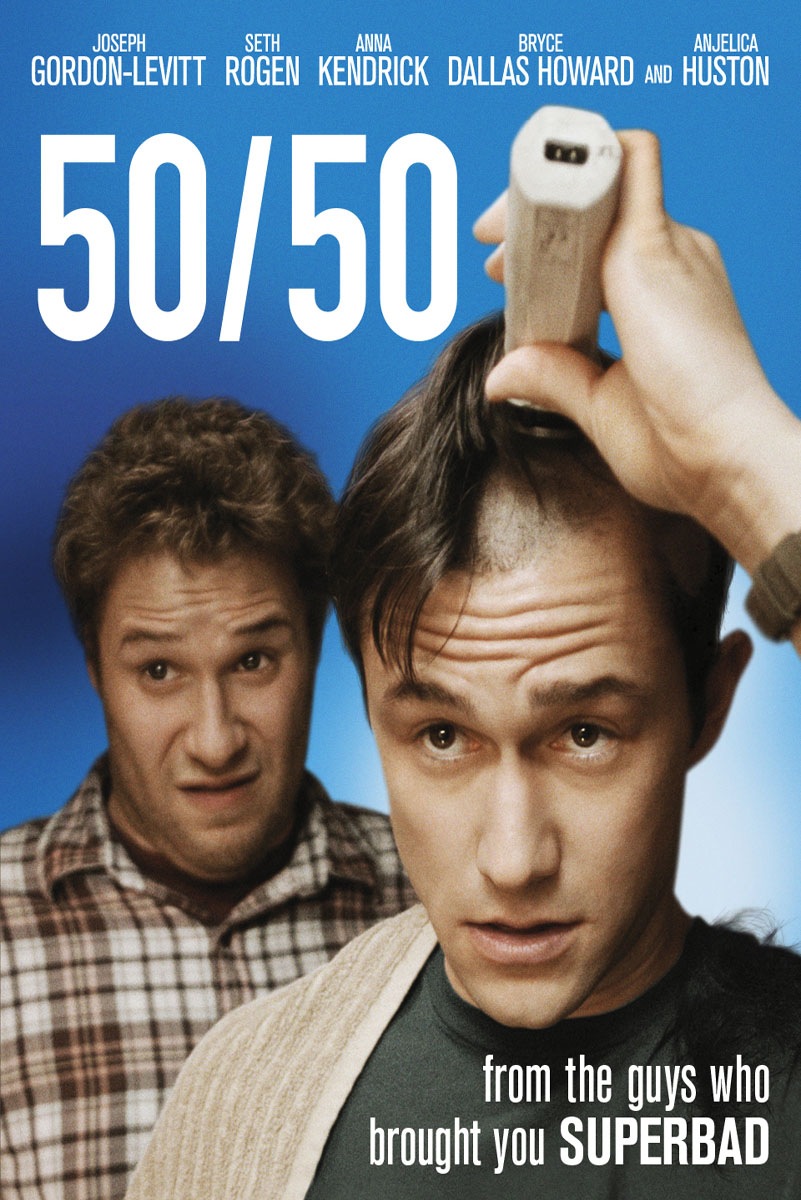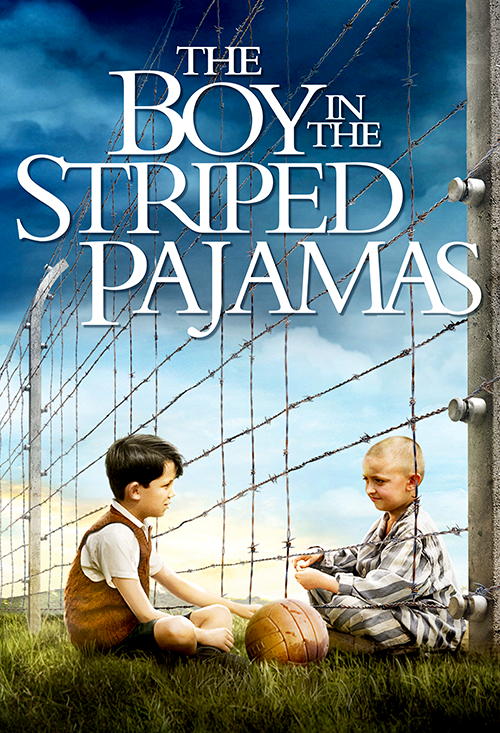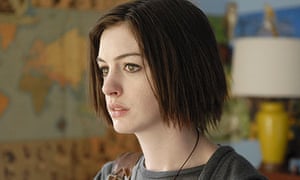
Sister battles ‘Rachel’ over
dueling psychology practices
Sobriety is such a great thing.
Those who have always had it, more or less, probably never appreciate it. And they might have trouble identifying with those who’ve run into trouble. Without question, every day a former abuser stays sober is a major victory.
Anne Hathaway is Kym Buchman, a young woman at the center of a rough life in “Rachel Getting Married,” a title that seems to ooze chick-flick fun but is anything but. Kym is just leaving some form of rehab when we are introduced to her in the opening scenes. She does not seem to value therapy. She mocks a fellow patient, Walter, calling him “Waldo” and pointing out no one will hand him a lighter because he will burn something down with it. This is an implication Kym has been in a facility with seriously troubled people and perhaps does not believe she belonged there.
Her father gives her a ride home, and a lengthy dialogue occurs in the car, with use of unsteady, hand-held camera shots that will persist throughout the film. It becomes clear that Kym’s father adores her, but worries for her and is tentative around her. Kym has been left out of the loop regarding important family news, such as her sister Rachel’s wedding. Once she arrives home, she will find more details of the wedding she does not like.
One major plus for the film is that Rachel, played by Rosemarie DeWitt, looks just enough like Kym to visually qualify as her sister. They have the rest of it down pat. Their chemistry is rock-solid. Rachel never quite reduces herself to Kym’s level. She is supportive, even loving, and will take the high road in disputes, but she will not view Kym as an equal. Somehow, somewhere, Kym has let her down, and she won’t forget it.
What startles initially, and remains compelling, is the family’s comfort level with multiculturalism. It is a presumably Jewish Connecticut family. Rachel’s fiance, though, is non-Jewish and non-white. And the wedding she is planning seems to incorporate elements of every continent. The bridal party will wear saris, there will be Asian guests, African guests, presumably South American guests too. What would be predictable is some kind of family tension on the generational level; the younger members readily embracing such a wedding and the older members skeptical. That is not evident here.
“Rachel” is a more extreme, unconventional version of the theme of the Oscar winner “Ordinary People.” That was about a family that seems, and is, perfectly successful on the outside, but deeply wounded within. The parents mingle impressively with bigwigs and successfully operate in the business and social environment, but they are unable to have simple, honest conversations with their own son whose life may depend on it.
In “Rachel” we see a family that eagerly embraces an interracial marriage with the warmest wishes and can readily be friends with someone of another color or religion, but can barely have an honest chat with each other. Kym happens to be a stage ahead of Conrad Jarrett of “Ordinary People.” She believes she has figured things out, and is not opposed to challenging her sister and parents on their behavior. As her frustration builds, so does her enlightenment.
Substance abuse, to someone who has not experienced it or been counseled about it, seems like it may occur on at least two levels. One would be a person’s capacity to be interested in using mood-altering drugs, seeking them out while sober. Another would be the addiction to these substances after regular use. The latter does not seem a problem for Kym. She may be flippant and annoyed, but she is composed around her home. The former might be the risk. But even in one critical scene where she makes a dangerous decision, that decision is not chemical.
From the stories she tells, it is clear she became a junkie at a fairly young age, with a lot of problems. Yet this is a good family, all of them. How did she get this way? Somehow, it just is. Perhaps this is a concept her family could not accept, which may help answer another question, why did her parents become divorced? Eventually we will get the suggestion of an answer.
Among other reasons, “Rachel” is noteworthy in that it is the first script written by Jenny Lumet, 41, daughter of Sidney Lumet and granddaughter of Lena Horne. Pros might have mixed opinions of her work. There is a lengthy scene, for example, involving a dishwasher. It seems to work, but also seems a bit off-the-wall and smacks of a real-life situation added to a script because it is quirky. Lumet notes in interviews that her father indeed is a “dishwasher lunatic.”
More significant, probably, is her family background with interracial marriage, and divorce. It’s unknown where Lumet gets the inspiration for a substance-abuse theme.
Landing a star such as Anne Hathaway will compensate for a writer’s rookie mistakes. Hathaway emerged as a teenager, and at 25 is on the short list of Hollywood’s greatest contemporary actresses. She seems bound to stay there. This role should deliver an Oscar nomination. Her mother is played by Debra Winger, who has not been seen by many theatergoers for a long time. Her face is so refreshing and pleasant, it’s just as annoying to the viewer as it is to Kym when she ducks out of her scenes early.
Hathaway and Lumet get a bonus from the hair crew, headed by Alan Dangerio, and makeup designer Evelyne Noraz. Hathaway has a darkness around her eyes that signifies something is not quite right, but does not make her look freakish. Kym and Rachel visit a salon before the wedding. A dialogue that occurs with a stranger during this session is over the top for the circumstances and only clumsily advances the plot. After the session is cut short, we see Kym’s hair is streaked, but it is ragged, and she has the appearance of someone falling off the wagon. But then we see her at the wedding, she is poised, and the same hair is very neatly arranged, a rich beauty to it.
Director Jonathan Demme owns an Oscar for a film much more conventional than this one, “The Silence of the Lambs.” That was in 1991. A couple years later, he scored another Academy hit with “Philadelphia.” He has not directed many feature films since 1995. He has chronicled Neil Young and Jimmy Carter in recent years and directed “The Manchurian Candidate,” a film possibly as chilling as “Silence” but one that has faded rather quickly, probably because the original is still so widely admired.
His use of uneven, hand-held camerawork in “Rachel” is so significant, theaters post signs informing viewers of what to expect and how much time they have to request a refund. The motion is a little off-putting but should not make viewers ill or stop them from watching. (Unfortunately, the film mostly plays in art houses, which tend to be smaller theaters, so there isn’t always the option of just sitting far back.) Directors may have different goals for hand-held filming. It seems to convey an edginess, that the people and situations we’re watching aren’t smooth and polished. Also, it conveys a greater sense of seeing things we’re not really supposed to see, a quick glance at a regrettable expression here or there. Those kinds of scenes are more obvious, and sometimes more phony, when classically shot. Demme’s cinematographer is Declan Quinn, who has worked on Demme’s other recent films and has a long resume, perhaps most notably, “Leaving Las Vegas.”
The hand-held is most obvious in the car in Kym’s opening ride home, and also as the wedding party is enjoying a rehearsal dinner. It comes into play during the reception as well. It is likely of greatest annoyance during the rehearsal dinner speeches, with so many people crammed around a table and so many speaking. But these speeches follow a solid dramatic order to further the plot, and are worth the time. The wedding reception may be considered a bit overdone. Filmmakers love weddings. The dancing in “The Godfather” and “The Deer Hunter” goes on forever, and the public approves. In “Rachel” it is overdone. It is not at all unexpected, and while it further depicts the family’s remarkable ease with outsiders, it begins to stray away from a provocative conclusion.
Demme has some fun amid the somber nature of AA-type meetings. He shows Kym barging in to one session late, in hilarious fashion. He will also pull off one of the fastest introduction-to-sex scenes in memory. Curiously, one character is known as “Angela Paylin” and at one point is discussed with disdain. Of course, the last name is not printed in the movie, only heard, and one has to wonder if there was a spelling change on the credits once a certain vice presidential nominee was chosen.
“Rachel” is a reminder that sometimes we can miss the trees in the forest. It’s also a reminder of how easy life could be if there were no random setbacks, if things would just go according to plan. Kym will fight Rachel to the end, philosophically, and seems to have the better hand: Rachel is an academic who practices psychology; Kym is the patient who is living it.
4 stars
(October 2008)
“Rachel Getting Married” (2008)
Starring Anne Hathaway as Kym ♦ Rosemarie DeWitt as Rachel ♦ Mather Zickel as Kieran ♦ Bill Irwin as Paul ♦ Anna Deavere Smith as Carol ♦ Anisa George as Emma ♦ Tunde Adebimpe as Sidney ♦ Debra Winger as Abby ♦ Jerome Le Page as Andrew ♦ Beau Sia as Norman Sklear ♦ Dorian Missick as Dorian Lovejoy ♦ Kyrah Julian as Sidney’s Sister ♦ Carol-Jean Lewis as Sidney’s Mom ♦ Herreast Harrison as Sidney’s Grandmother ♦ Gonzales Joseph as Sidney’s Cousin ♦ Paul Lazar as Ukrainian Al ♦ Donald Harrison Jr. as Himself ♦ Fab 5 Freddy as Himself ♦ Robert Castle as Judge Castle ♦ Tareq Abboushi as Musician #1 ♦ Johnny Farraq as Musician #2 ♦ Gaida Hinnawi as Musician #3 ♦ Dimitrios Mikelis as Musician #4 ♦ Amir El Saffar as Musician #5 ♦ Jimmy Joe Roche as Videographer ♦ Christy Pusz as Nice Family Friend ♦ Molly Hickok as Molly ♦ Maria Dizzia as Hip Young Guest ♦ Josephine Demme as Neighborhood Girl ♦ Marin Ireland as Angela Paylin ♦ Elizabeth Hayes as Susanna ♦ Cyro Baptista as Brazilian Drummer #1 ♦ Jose Mauricio De Faria as Brazilian Drummer #2 ♦ Lisette Santiago De Faria as Brazilian Drummer #3 ♦ Marcus Santos as Brazilian Drummer #4 ♦ Roslyn Ruff as Rosa (Staffer) ♦ Sebastian Stan as Walter (Patient) ♦ Pastor Mel Jones as Speaker at Meeting ♦ Andre Blake as Stylist ♦ Dequina Moore as Rachel’s Stylist ♦ Joe Toutebon as Cop ♦ Annaleigh Ashford as Counter Girl ♦ Quincy Tyler Bernstine as Nurse ♦ Van Hughes as Valet ♦ Tamyra Gray as Sidney’s Ex ♦ Robert Merrill as Christian Scott ♦ Paul Sparks as Paul ♦ Michelle Federer as Michelle ♦ Darrell Larson as Darrell ♦ Matt Stadelmann as Matthew ♦ Floanne Ankah as Flo ♦ Alix Derrick as Rachel’s College Roommate ♦ Victoria Haynes as Bridesmaid ♦ Edie Hofstatter as Paramedic ♦ Joey Perillo as Bob the Neighbor ♦ Matt Rabinowitz as Matt R. ♦ Jim Roche as Dr. Curve ♦ Anita Sarko as Herself ♦ Richard Shankman as Dog Walker
Directed by: Jonathan Demme
Written by: Jenny Lumet
Executive producer: Carol Cuddy
Executive producer: Ilona Herzberg
Producer: Neda Armian
Producer: Marc E. Platt
Associate producer: Elizabeth Hayes
Associate producer: Innbo Shim
Original music: Donald Harrison Jr., Zafer Tawil
Cinematography: Declan Quinn
Editing: Tim Squyres
Casting: Tiffany Little Canfield, Bernard Telsey
Production design: Ford Wheeler
Art direction: Kim Jennings
Set decoration: Chryss Hionis
Costume design: Susan Lyall
Makeup: Evelyne Noraz, Alan Dangerio, Louise McCarthy, Sunday Englis, James Sarzotti, Frank Barbosa, Susan Schectar
Stunts: Jeffrey Lee Gibson
